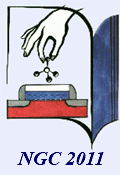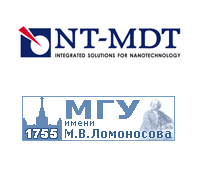
Nano and Giga Challenges
in Electronics, Photonics and Renewable Energy
Symposium and Summer School (Tutorial Lectures)
Moscow - Zelenograd, Russia, September 12-16, 2011


|
Nano and Giga Challenges in Electronics, Photonics and Renewable Energy Symposium and Summer School (Tutorial Lectures) Moscow - Zelenograd, Russia, September 12-16, 2011 |  |
Commentary Anatoli Korkin
Background: Creativity of Russian scientists and engineers is well known and education in Soviet Union in fundamental science, math, chemistry and physics was one of the best in the world. After collapse of the Soviet Union, many leading scientists and engineers left the country and nowadays Russia continues to suffer from brain drain in many science and technology areas. Russian government is making an effort to create a favorable environment for technology innovations and supports various form of international collaboration including Russian emigrants, scientists and engineers working abroad. Ministry of Education and Science of Russian Federation has established a special program to stimulate international collaboration which provides grants for international researchers to led research projects in Russia. On the other side the Clinton-Lavrov Commission, which has been established in July 2009, provides additional stimulus and support in developing collaboration between the US and Russia in science and technology. Goals: RUSTEC initiative at ASU is aimed to create a center dedicated to work with Russian universities, companies and funding organizations in order to promote and develop collaboration between the United States and Russia in the area of nano/high-tech education, research and innovations. The Center will function as a service provider (cost recovery center) to Russian and US organizations for their needs in education, research and innovations in such areas as electronics, photonics, renewable energy and energy efficiency, bio and information technology. Funding for the center is expected to become available from several sources such as grants in the US and Russia for education, science and technology (joint programs), partnership agreements and service contracts with Russian and US companies and universities and US, donations from individuals and non-profit organizations, and consortium fees. Why ASU? Arizona State Univerity is one of the largest Universities in the US with recognized leadership in several nanotechnology related research areas including semiconductors, organic and bio nanotechnology, solar energy and related areas - photonics, lasers, LEDs. ASU is one of the top universities USA in the infrastructure for nano scale research, with a broad array of fabrication and characterization facilities, as well as a network of affiliated start-up companies to which facilitate commercialization of academic innovations and partnership with large corporations. ASU can offer unique “packages” for international partners in extended science and business education, research collaboration and in development and commercialization of high-tech innovations. Initial activities: More than 100 participants attended the first RUSTEC workshop including about half of them from Russia including representatives of 10 universities from 5 regions, a group of scientists and innovators sponsored by RUSNANO and representative delegation from Tomsk region including vice-governor and two university vice-rectors. In two weeks after the workshop a large group of almost 70 professors and graduate students from Kazan State technological University had three weeks training at ASU in advanced chemistry, nanotechnology and organization of education and research. The training was paid by a grant of Russian Ministry of Education and Education. About 40 ASU faculties took part in the training, which was considered as very efficient by participants from Russia. My partner for RUSTEC initiative and co-chairman of NGC2011 conference Steve Goodnick and I will be glad to answer questions about RUSTEC and proposals for collaboration from meeting participants and guests. Welcome to the 5th Nano and Giga Forum! |
Empowered by Nano & Giga Solutions and NT-MDT
© 2010